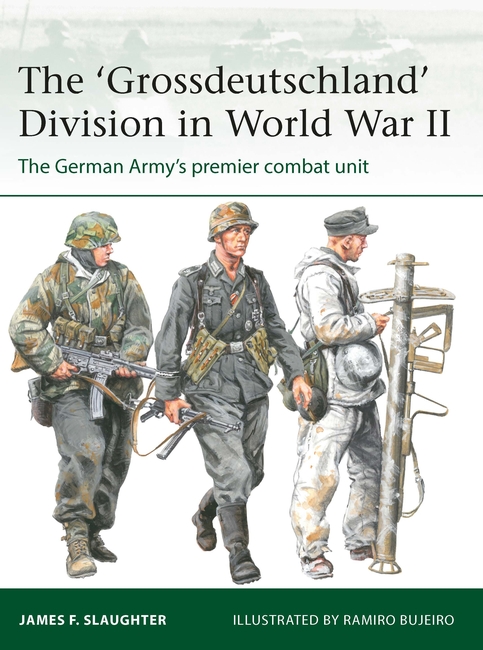
Großdeutschland or ‘GD’ is arguably regarded as the best formation in the Heer during World War II. Beginning its service as a unit of ‘asphalt soldiers’ guarding government buildings and conducting eremonial parades for tourists and the public in Berlin, by the time of Operation Zitadelle in July 1943 GD was a Panzergrenadier division, and in name at least expanded to a Panzerkorps by war’s end, maintaining its core division but encompassing a multitude of units under its umbrella. During the war, GD earned the title Die Feuerwehr (the fire brigade or department, which also became the title of the division newspaper) for seeming to appear everywhere there was an emergency on the Eastern Front. An elite division in equipment, troops and leadership, receiving the best that Germany had to offer, GD was effective because of its quality on the battlefield, which it strove to maintain throughout the war.
GD began to earn its elite reputation during the French campaign, fighting as breakthrough at Sedan and then at arguably the toughest battle of the French campaign at Stonne where the French Army desperately sought to restore the fatal gap torn in its line from which it would never recover. GD then saw action in Yugoslavia before preparing for Operation Barbarossa, where it sealed its reputation and earned its fame fighting almost to annihilation during December 1941, through the vast expanses of the interior of the Soviet Union during 1942, almost wiped out again in the Luchessa Valley, and finally re-formed and re-equipped for Kursk in 1943, the last major German offensive on the Eastern Front, and one from which it would arguably never recover. GD then went on to fight in battles little-known in the Anglophone world such as Târgu Frumos in Romania in 1944, which are invaluable for understanding the effectiveness of the Heer in defence, even during its decline.
GD’s history is fascinating on multiple levels. Those interested in the French campaign and the Eastern Front will find GD’s story has much to offer. For those interested in the evolution of mechanized warfare during World War II, GD’s progression from an infantry regiment to a mechanized infantry division and the evolution of its operations and capabilities will help readers better understand key differences in organization and capabilities. The organization and equipment of GD as it evolved will also be of interest to the modeller, collector and wargamer.
GD produced a number of Ritterkreuz holders during the war and was staffed with officers among the most interesting and effective (such as Hasso von Manteuffel) and controversial (such as Otto Remer) to pass through any German division. Not immune from culpability for its actions against prisoners, opponents (internal and external) and civilians at points during the war, GD stands as a fascinating study of the evolution and potential of German mechanized formations during World War II.
If you enjoyed today's blog post you can find out more in The 'Grossdeutschland' Division in World War II.

Comments
You must be logged in to comment on this post. Click here to log in.
Submit your comment